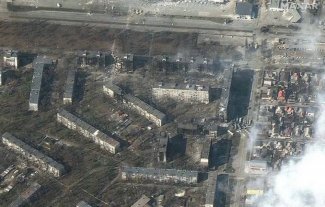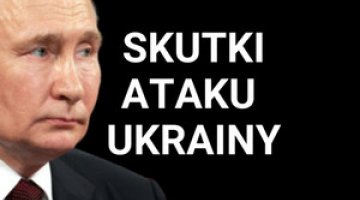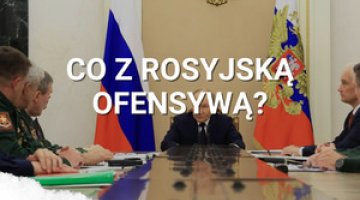The Russian attack on Ukraine: day 23

According to the General Staff of the Armed Forces of Ukraine, the military situation has not changed significantly over the past 24 hours, although “the aggressors have achieved partial success, temporarily seizing localities and establishing control over communication routes” in southern and eastern Ukraine. To compensate for some land failures, the aggressor is striking in other directions using “precision-guided weapons as well as unguided munitions”. Ukrainian communiqués focus on the problems the Russian army is having due to high losses: 130 soldiers of the 20th Mechanised Division of the 8th Combined Arms Army allegedly refused to take part in the war in Ukraine. Information about the redeployment to Ukraine of new units from the Eastern and Central Military Districts and Russian bases in the South Caucasus has not been confirmed (the dispatch to Ukraine of a subunit from the 102nd Military Base in Armenia is still planned). The Ukrainian General Staff does not rule out that, in view of the losses, Russia may decide on a general mobilisation, preceded by a provocation comparable to that which lay behind the Second Chechen War. According to the Ukrainian side, due to Russia’s high usage of Kalibr winged missiles and unguided missiles for Smerch systems, their manufacturers were to switch to a 24-hour mode of operation.
On the Polessie directions clashes occurred sporadically and were positional in nature. The sides were gathering forces and expanding the engineering positions they occupied. In the regions where the aggressor had not yet approached the borders of Kyiv, the defenders began to form the third, outer ring of defence. Russian forces are strengthening on the Irpin River border, on the northeastern outskirts of the Ukrainian capital (Hostomel-Ozera) and 20 km north of its borders (Zdvyzhivka-Berestyanka) and are continuing shelling along the entire contact line (villages in Zhytomyrshchyna, where the aggressor has not conducted active operations for over a week, were bombarded).
The defence of Chernihiv, where the Ukrainians destroyed the enemy’s battalion tactical group command post and two artillery batteries, was also positional. Points of Ukrainian resistance in the Chernihiv and Sumy regions were shelled and bombarded for another day. In the Slobodka direction, fighting took place in the northern part of the Poltava region, where Ukrainian partisans had become active on the border with the Sumy region. The Russians reinforced the grouping operating there with two subunits from the 6th CAA and the 1st Tank Army. Kharkiv and other defence points were bombed and shelled for another day; the aggressor is still trying to capture the city of Izyum.
For the next 24 hours, the heaviest fighting took place in Donbass. In Luhansk region, Ukrainian forces are defending themselves in the towns of Rubizhne and Popasna and are blockaded in Severodonetsk. The aggressor’s troops are advancing on Pokrovsk on the north-western outskirts of the Donetsk region, and there is fighting for Taramchuk, Avdiyivka and towns west of Gorlovka. Communications from the Ukrainian General Staff indicate that the aggressor has seized the coastal part of Mariupol. Fighting continues over the Azovstal metallurgical complex, the second largest in Ukraine, which was destroyed by Russian bombardment. The defenders, pushed to the centre of the city, are calling for its relief.
On the Taurida direction, aggressor troops advanced towards Zaporizhzhia and proceeded to bombard and shell Ukrainian positions on the southern and eastern outskirts of the city. The authorities banned movement in the city after 4 pm and appealed to residents to remain in hiding. On the southern Bug River direction, Russian forces bombarded Nikolayev for another 24 hours. Ukrainian units are said to be holding back the advance on Kryvyi Rih. According to Ukrainian reports, as a result of another shelling by the Ukrainians of the Chornobayivka airfield near Kherson, the commander of the Russian 8th CAA of the Southern MD, Major General Andrei Mordvichov was killed.
The Ukrainian General Staff estimates enemy combat losses at about 14,400 killed, wounded and captured, 466 tanks, 1,470 armoured vehicles, 213 artillery systems, 72 multi-propelled rocket launchers, 44 air defence systems, 95 aircraft, 115 helicopters, 914 wheeled vehicles and 17 UAVs. Since 24 February Russian shelling of Kyiv has killed 222 people, including 60 civilians, and wounded 889, including 241 civilians. About 40 residential buildings, six schools and four kindergartens have been damaged. According to the Russian communiqué, the total Ukrainian losses were said to be: 196 unmanned aerial vehicles, 1,438 tanks and other armoured fighting vehicles, 145 rocket launchers, 556 guns and mortars and 1,237 wheeled vehicles.
A counterintelligence operation by the Security Service of Ukraine is underway. Diversionary and reconnaissance groups and individuals recruited by Russian special services before the outbreak of the war are being detained. In Kyiv, Poltava and Kharkiv, individuals providing data on the location of Ukrainian forces and military equipment and the effectiveness of infrastructure shelling have been arrested. In Odessa and Zaporizhzhia, individuals conducting pro-Russian agitation, calling for the creation of separatist so-called people’s republics have been detained. The anti-cybercrime division of the Ukrainian police has blocked more than 1,500 online profiles watched by 15 million recipients, used by the Russians to wage information warfare. Among those detained, most are Ukrainian citizens, often coming from occupied regions and claiming to be refugees.
According to the Polish Border Guard, 2.04 million refugees have entered Poland from Ukraine since the start of the invasion, including 42,700 on 18 March (down by 18.5% from the previous day). The UN reports that 3.2 million people have left Ukraine since 24 February, with nearly 6.5 million being internal refugees. This means that about 25% of the country’s population had to abandon their homes.
On 18 March, more than 9,000 people were evacuated through humanitarian corridors, including 5,000 from Mariupol (1,124 children among them), 500 from Berdyansk, and about 4,000 from the Sumy region. The opening of 10 humanitarian corridors from Mariupol and Bucha, among others, is scheduled for 19 March. The Russians continue to shell humanitarian aid convoys. There are repeated cases of kidnapping of representatives of local authorities and escalation of terror against the civilian population. In Novaya Kakhovka, the secretary of the town council was imprisoned and tortured to try to force him to support the occupying forces.
The deadlock in Russian-Ukrainian talks continues. Ukrainian presidential advisor Mykhailo Podolak estimated that the talks could last at least several weeks. Meanwhile, more Ukrainian politicians are not ruling out the possibility of amending the constitution in the part concerning integration with NATO, the chairman of the Verkhovna Rada Ruslan Stefanchuk among them.
Russian Foreign Ministry chief Sergei Lavrov has warned Western countries against diverting further arms supplies to Ukraine, announcing that any cargo entering Ukraine that Russia deems military will become a target.
Prime Minister Denys Shmyhal announced simplification of customs procedures at the border. All goods entering Ukraine will be exempt from customs duties and VAT, and the clearance procedure is to take no more than 15 minutes. The relevant regulation has been adopted by the government; the document still needs to be voted on by the Verkhovna Rada. The authorities are seeking to unblock border crossings with the EU for the transfer of goods – under current conditions of the blockade of Ukrainian ports, this is the only way for the trade exchange.
Myronovsky Chleboprodukt (MChP), one of the largest agroholdings in Ukraine and the largest poultry producer, said it plans to start its seeding campaign as planned but will not be able to pay interest on its Eurobonds. With much of its exports blocked, MChP has shifted operations to meet domestic demand.
Commentary
- The Armed Forces of Ukraine retained the ability to make precision strikes against targets deep inside the aggressor’s grouping. Most probably, both shellings of the Chornobayivka airfield (on 15 and 18 March) were carried out with Tochka-M ballistic missiles from the Zaporizhzhia region, which forced the Russian side to accelerate its actions and launch strikes in the direction of that city, as well as search for and destroy the remaining Ukrainian operational-tactical missile launchers. The Ukrainian effectiveness in destroying command posts and eliminating senior Russian commanders is noteworthy (Major General Mordvichov is the second victim of this rank), which is the result of close cooperation between the Ukrainian Armed Forces and the US Army’s reconnaissance units. The defenders are supported by, among others, electronic reconnaissance aircraft, which provide the Ukrainian army with real-time information, without which such significant successes in attacking enemy command structures would be impossible. American intelligence also helps evade Russian strikes. However, the Ukrainian army’s shrinking arsenal of precision-guided means of destruction limits its ability to use this kind of support.
- From the point of view of Ukrainian defence, the most difficult situation at present is in besieged Mariupol, whose defenders are calling on the Ukrainian authorities for a rapid reprieve. In the current situation, the Ukrainian army does not have the capacity to carry it out.
- The Ukrainian government’s statements on NATO are another sign that Kyiv is ready to accept one of Moscow’s demands for Ukraine’s neutrality. This could shatter the consensus within the political elite that has prevailed since the beginning of the war, and it is not certain that a 300-vote majority could be found in the Verkhovna Rada, which is required to amend the constitution (moreover, the constitution cannot be amended under a state of war). However, Moscow would consider the concessions applying only to Ukraine’s neutral status to be absolutely insufficient.




